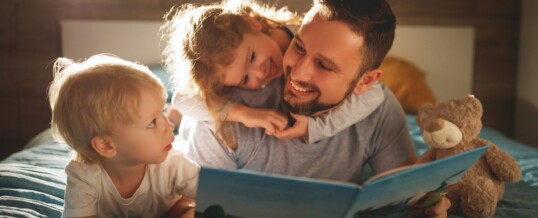
On Mother’s Lap, by Ann Herbert Scott
A young Alaskan native boy is sitting on his mother’s lap and he wants to bring some of his favorite things to his mother’s lap as well: dolly, puppy, boat. Then baby sister wakes up and the boy says, “There’s no room.” Mother says, “There’s always room on mother’s lap.” Sometimes jealous feelings get in the way, but with mother’s help, children learn that no one will be left out.
The Listening Walk, by Paul Showers
A girl and her dad walk their dog in the neighborhood. They don’t talk; they listen to the sounds in the neighborhood. A basketball, a bicycle, a baby crying are some of the sounds they hear. Slowing down, and taking time to help children notice what is happening around them and then talking to them about the sounds, helps children better understand their world. You are making connections with your child. You can listen together inside too – to the sounds you both hear inside and outside.
Big Problems, Little Problems, by Ben Feller
Sam and dad were getting ready to leave the house but Sam had what he said was a big problem.… He couldn’t zip his new jacket. Dad showed him how to align the grooves and pull up the zipper. A big problem becomes a small problem. Later, Sam shows dad how something that seems to be a big problem becomes a little problem. Because children are little, many small things seem very big to them. Parents can help by talking with their child to figure out ways to fix things that seem like big problems.
How to pick a great children’s book
The selection of books is as important as the selection of toys. Young children have incomplete information for understanding the world around them, which results in what we often refer to as “magical thinking”: explanations for things that don’t make sense to adults. Magical thinking can make it difficult to know what’s going on in a child’s mind, and may lead to unexpected reactions of fear or stress.
Here are some thoughts about selecting appropriate books:
- Look for pictures that may be scary to a young child. Is there a fire? Do the animals have long sharp teeth? Are there depictions of things that you know are troubling to your child specifically?

Acierno
- Is the vocabulary suitable? Are the words scary, like yelping, snarling and hissing sounds. Are there references to violence or antisocial behavior – fighting or throwing things?
- Is it developmentally appropriate? Books for young children should be uncluttered and simple with a clear presentation of the important concepts. The first words that children learn are nouns – the objects of everyday life.
For more insights about selecting books and reading with young children, look at our original list of 100 great children’s books.
Book links go to Amazon and generate a small donation to Hanna Perkins Center when used to make a purchase.
Other blog posts that might be of interest:
JUL
2023





About the Author:
Early Childhood Educator Noreen Acierno teaches preschool at Hanna Perkins School, where she has worked since 1999. She is passionate about children's books.